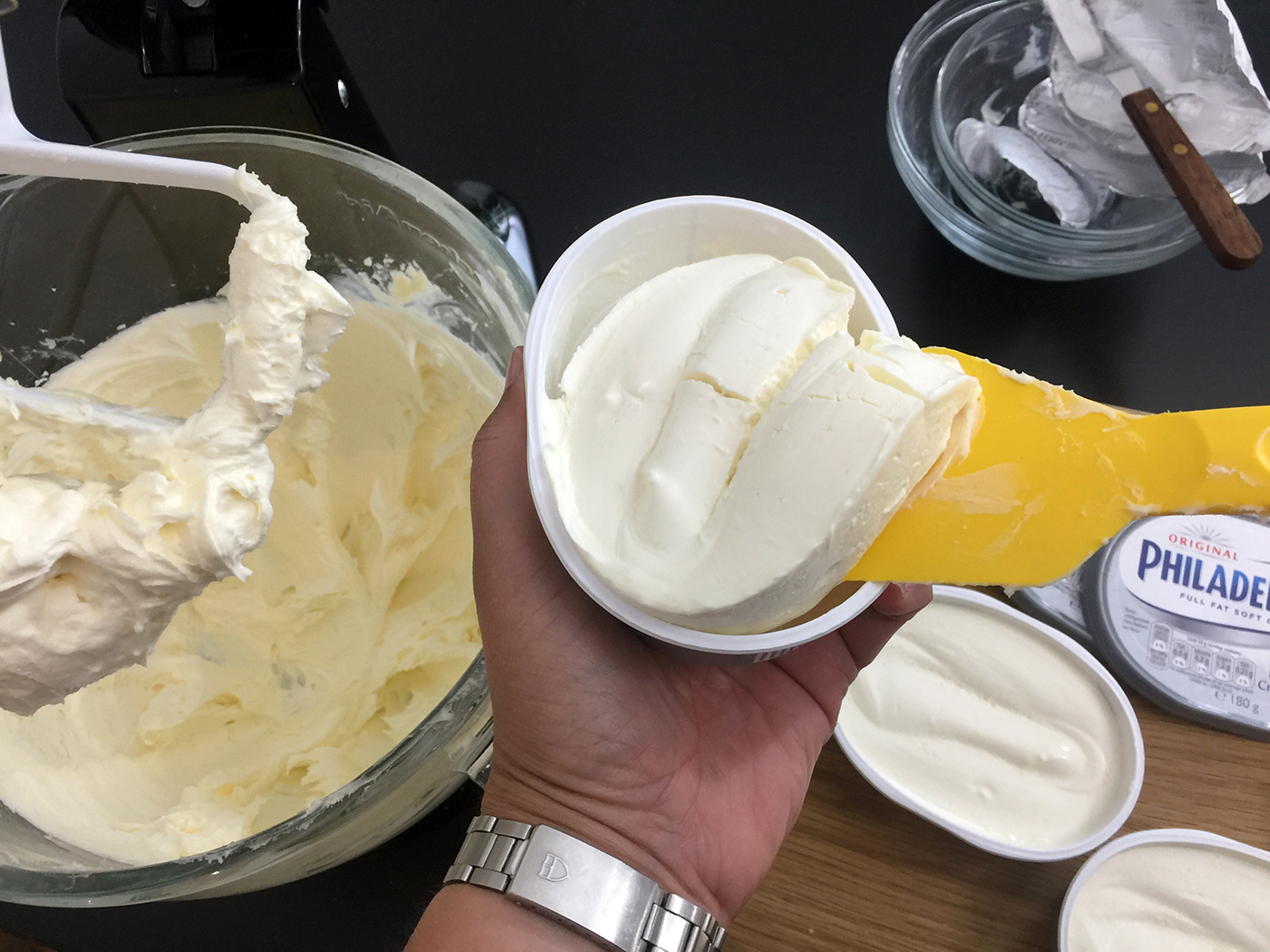Cream Cheese Frosting
Cream Cheese frosting is incredibly indulgent. It compliments many cakes, in particular it marries beautifully with both Banana Cake & Carrot Cake.
This recipe is incredibly versatile. It works on the ratio 2 – 1 – 1.
2 units of cream cheese to 1 unit of icing sugar and 1 unit of unsalted softened butter (vanilla extract is optional, I like to add it!).
For example. Using a 180g Philadelphia cream cheese portion, I would need 90g unsalted butter and 90g of icing sugar.
The dominant ingredient is Cream Cheese, the icing sugar helps to bind and sweeten the icing and the unsalted butter once refrigerated, helps to give form and structure enabling the icing to set and keep its shape.
Using the above ratio, you will also avoid wastage. Should you make more than you need, the icing can also be frozen. Simply treble bag any excess icing or place it in an airtight container and label and date the icing. It will keep up to 3 months. It will keep covered in the fridge 3-5 days. Should the icing take on a taste from the freezer simply add additional Vanilla extract (treble packing the icing will help to avoid this).
Ingredients - 1 portion of Cream Cheese Frosting
180g Philadelphia Cream Cheese (Full Fat)
90g unsalted butter, softened
90g sifted icing sugar
1 x Portion will ice 10 -12 Muffin size cupcakes
1 x portion will ice a 20cm square cake or ice and fill an 18cm round cake.
3 x portians will ice, fill and cover a 3 layer 18cm round cake.
Please Note The photographs below are from mixing 3 portions of the Cream Cheese Frosting. This frosting was made for my delicious Carrot Cake.
























Method
1. Weigh out all ingredients.
2. Sift icing sugar and soften unsalted butter. You should be able to make an indentation in the butter (DO NOT MELT the butter, you only want it softened).
3. Cream the icing sugar and butter together using the flat paddle attachment of your stand mixer (or your hand mixer) until the mixture is a pale in colour and mousse like in texture 4-5 mins. Occasionally scraping the sides of the bowl down and the base to ensure all of the icing sugar has been combined.
4. Remove the cream cheese from the fridge, remove any excess liquid and add directly to the creamed butter and icing sugar and mix immediately until just combined.
5. Scrape the sides of the bowl down again. If you are making numerous portions add the additional cream cheese briefly and continue until all of the cream cheese has been added. Ensuring you continue to scrape the base and sides of the mixing bowl.
6. Taste – ½ to 1 tsp of vanilla extract can be added to your liking and mix until just combined. Store covered in the fridge until needed.
7. Once the cake has cooled completely, begin icing the cake (if the cake is still warm, the icing will become runny).
Top Tips
- You MUST use full fat cream cheese. As the low fat and reduced fat cream cheese contains more liquid (and stabilisers).
- Use Unsalted butter as it contains less water, also I think it tastes better (personal preference, you can always add salt).
- You MUST use softened butter. If your butter is not softened, lumps will form and you will end up with lumps of yellow in the icing. You cannot beat these out once you have added the cream cheese as over mixing can result in the icing going runny. Check the butter just before use, if the ambient temperature in your kitchen is cold, the butter will begin to firm up immediately.
- Cream the butter and icing sugar first, this will help to avoid over beating the cream cheese frosting.
- Mix the icing once you have added the cream cheese. As the cream cheese is cold, it can start to firm up the butter if left unmixed – resulting in a lumpy icing.
- Sift icing sugar to avoid lumps.
- As a general rule, I mix 2 parts cream cheese with 1 part unsalted softened butter and 1 part sifted icing sugar, you can add vanilla extract to taste. The beauty of this recipe is that it can be adapted depending on the quantity of cream cheese you have to hand.
- Any excess cream cheese frosting can treble bagged, labeled and frozen for up to 3 months.

